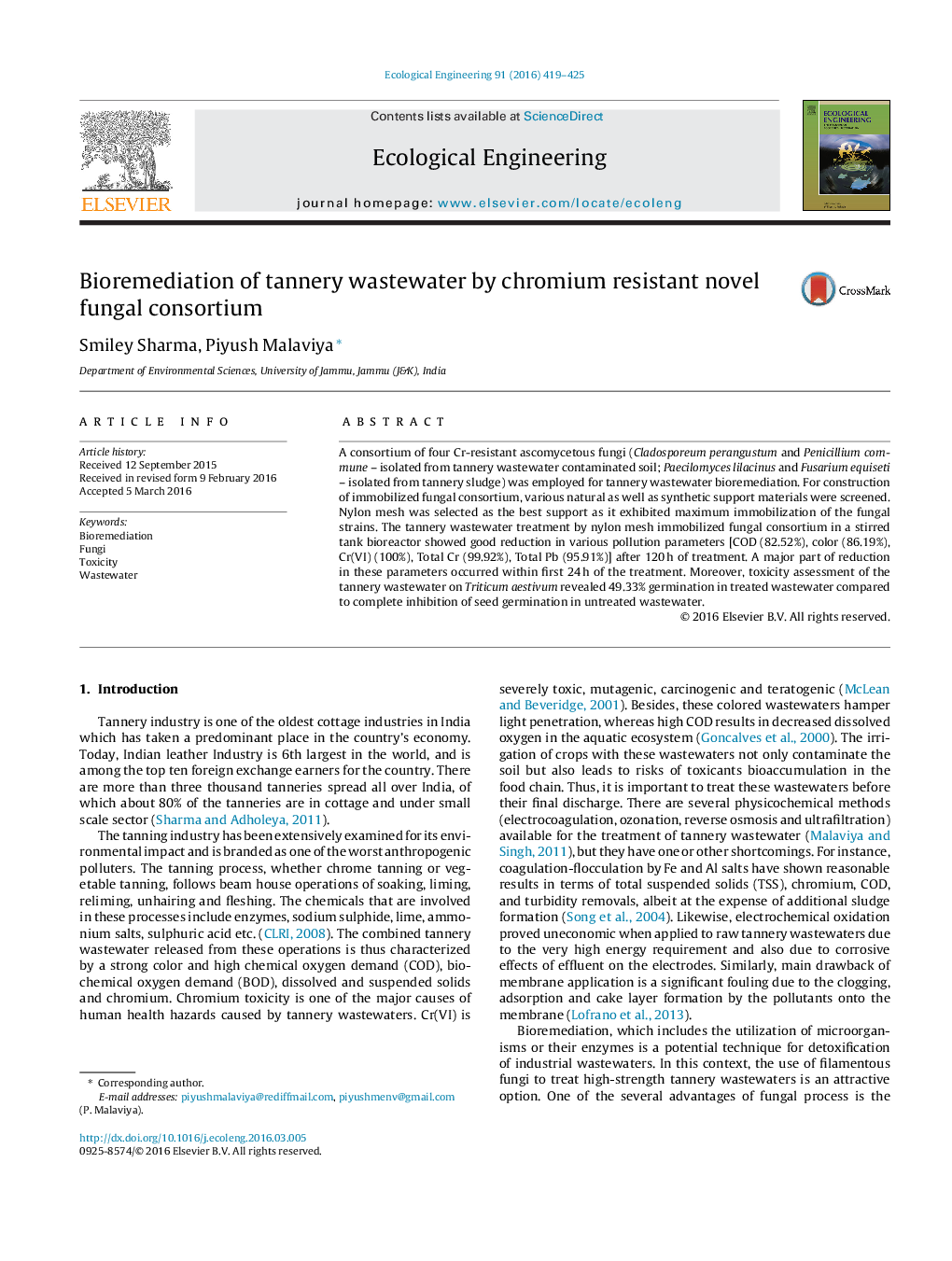| Article ID | Journal | Published Year | Pages | File Type |
|---|---|---|---|---|
| 6301366 | Ecological Engineering | 2016 | 7 Pages |
Abstract
A consortium of four Cr-resistant ascomycetous fungi (Cladosporeum perangustum and Penicillium commune - isolated from tannery wastewater contaminated soil; Paecilomyces lilacinus and Fusarium equiseti - isolated from tannery sludge) was employed for tannery wastewater bioremediation. For construction of immobilized fungal consortium, various natural as well as synthetic support materials were screened. Nylon mesh was selected as the best support as it exhibited maximum immobilization of the fungal strains. The tannery wastewater treatment by nylon mesh immobilized fungal consortium in a stirred tank bioreactor showed good reduction in various pollution parameters [COD (82.52%), color (86.19%), Cr(VI) (100%), Total Cr (99.92%), Total Pb (95.91%)] after 120Â h of treatment. A major part of reduction in these parameters occurred within first 24Â h of the treatment. Moreover, toxicity assessment of the tannery wastewater on Triticum aestivum revealed 49.33% germination in treated wastewater compared to complete inhibition of seed germination in untreated wastewater.
Related Topics
Life Sciences
Agricultural and Biological Sciences
Ecology, Evolution, Behavior and Systematics
Authors
Smiley Sharma, Piyush Malaviya,
